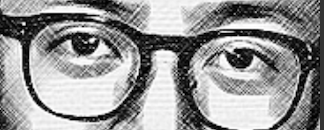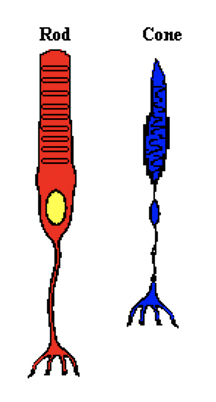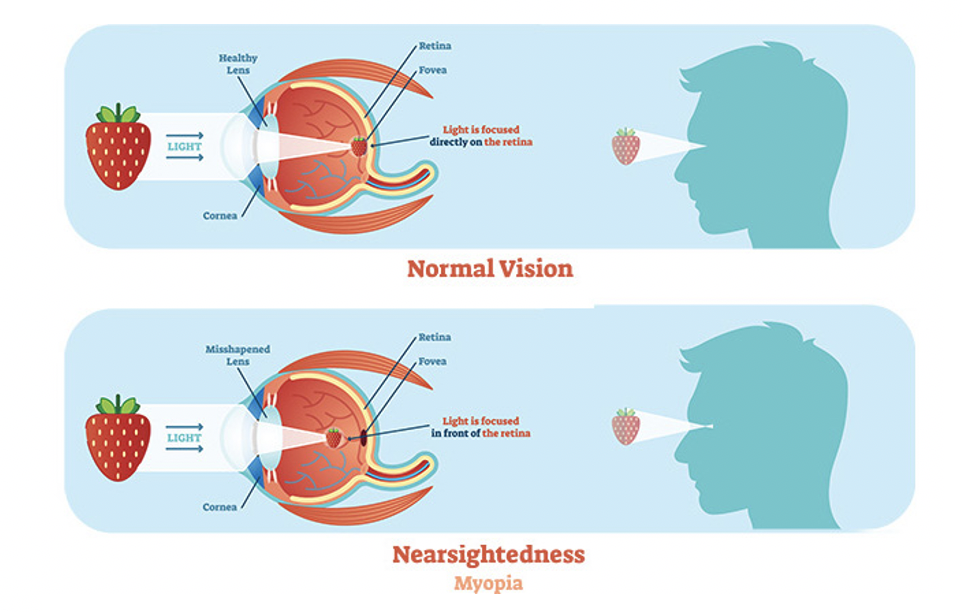
From a very young age, whenever I was watching the television, or reading a book, I would always have it right up to my face. Due to this, my mom thought it was just a bad habit, and that if I did not fix this habit, I would develop problems in my vision. Little did she know I already had vision problems! When I went to see the eye ophthalmologist I was diagnosed with myopia, which is a scientific term for near-sightedness. Throughout my whole life until middle school I have been living with the hassle of having this condition, it was my bane. I couldn’t play sports, I couldn’t look at a computer for extended periods, and I was this very thin kid who had glasses, and ultimately fit in the archetype of a nerd, as I always would choose studies over physical activity. Fortunately, this problem was fixed once I got into high school, stay tuned to find out what this was!

When we started learning about this topic in Art On The Brains class at Emory University, it instantly caught my attention. I was always in awe of science and learning about why my condition in a scientific manner was far more than engrossing. Talking about the eye, I found out that for us to see, the cornea and the lens have to focus light rays on to the retina. There are also two different types of photoreceptors in our eyes: rods and cones. While the “rods are activated by 1 photon and contain the photopigment rhodopsin, the cones need 10-100 photons to be activated, and they provide RGB color vision”(“How the Eyes Work.”). In short, rods in the retina, which in “connect each output to the neurons, amplify vision in the low light(night vision)”(“How the Eyes Work.”), while the cones have “no blood vessels, and have a 1 to 1 connection between photoreceptors and output neurons, and they provide color vision”(“How the Eyes Work.”). These photoreceptors provide for our vision through the photons of the visible light spectrum, the “photons must have enough energy to perform the chemical work, when absorbed by the receptive molecules through the opsin of the eye” (“How the Eyes Work.”), for us to see. Due to this, we cannot see in dark areas, and can only see a faint bit, when put in the room with dim lighting, as there isn’t enough stimulation to perform the chemical work needed for full vision.
However, this whole process of having the ability to see is altered when we have clinical defects whether it be genetic or environmental. There are many clinical defects in normal vision such as emmetropia, myopia, hyperopia, presbyopia, etc. However being very interested in myopia, I was curious about why I could not see objects that were far away. For normal vision, since the eyes are round, the increasing lens curvature enables the eye to focus on near objects, and as the object gets further the eye accommodates for this by flattening the lenses, which allows us to focus on far objects. However in my case of severe myopia, “my eye is longer than normal, and I have a cornea that is too steep”(Turbert). Therefore, the “light rays focus in front of the retina instead of on it for far objects”(Turbert). This in turn allows the accommodate for a clear vision of the near object, but not the far objects.

From a primary source study by Elie Dolgin, it states that “East Asia has been gripped by an unprecedented rise in myopia, also known as short-sightedness” (Dolgin), and that statistics show that “Sixty years ago, 10–20% of the Chinese population was short-sighted. Today, up to 90% of teenagers and young adults are.”(Dolgin) Since I am from South East Asia, as well as coming from a Chinese ethnicity, it is no surprise that my eyesight is terrible. However according to the study, although glasses and contact lenses may provide a temporary fix, it does not change the underlying problem that our genetic expression codes for having the disadvantageous mutation of elongated eyeballs, and they call this the “myopia epidemic” (Dolgin), in which “East Asians have seen a steep rise in short-sightedness over the past 50 years”(Dolgin).
In the end, after I finally learned about why my eye was the way it was, I finally started to understand more. It was very insightful and after learning about the scientific interpretations, my condition seemed to be far less scary than it used to be. Back to how I can see without wearing glasses now, after my middle school years, my mom took me to see this ophthalmologist overseas, in which there was overnight-contact lens technology. In short, it was a hard gas-permeable contact lens that you put on at night when you go to sleep, and this reshapes your cornea, so it recalibrates the way light enters the eye and is bent at the curvature, therefore, eliminating myopia temporarily. However, if the contact lenses are not worn for a day or two, the eye returns to its normal state of bad vision. But, all in all this technology was my savior, as it provided me with many opportunities to better myself in terms of my health and social well-being.
Works Cited
“How the Eyes Work.” National Eye Institute, U.S. Department of Health and Human Services, www.nei.nih.gov/learn-about-eye-health/healthy-vision/how-eyes-work.
Dolgin, Elle. “The Myopia Boom.” Nature , 18 Mar. 2015, www-nature-com.proxy.library.emory.edu/news/the-myopia-boom-1.17120.
Turbert , David. “Nearsightedness: What Is Myopia?” American Academy of Ophthalmology, 26 June 2020, www.aao.org/eye-health/diseases/myopia-nearsightedness.
To start with, I liked the title of the post because it instantly caught my attention. The introduction was also humorous because it was written in a casual tone to introduce the topic of the post smoothly. I also liked how you brought the materials that we have learned in class to the post and connecting them with the topic that you were talking about. Also, I was impressed by the detailed explanation of how the vision of the person with normal vision and with myopia differ. And the post includes an appropriate in-text citation and work cited page at the end. Overall, I really enjoyed reading your post!